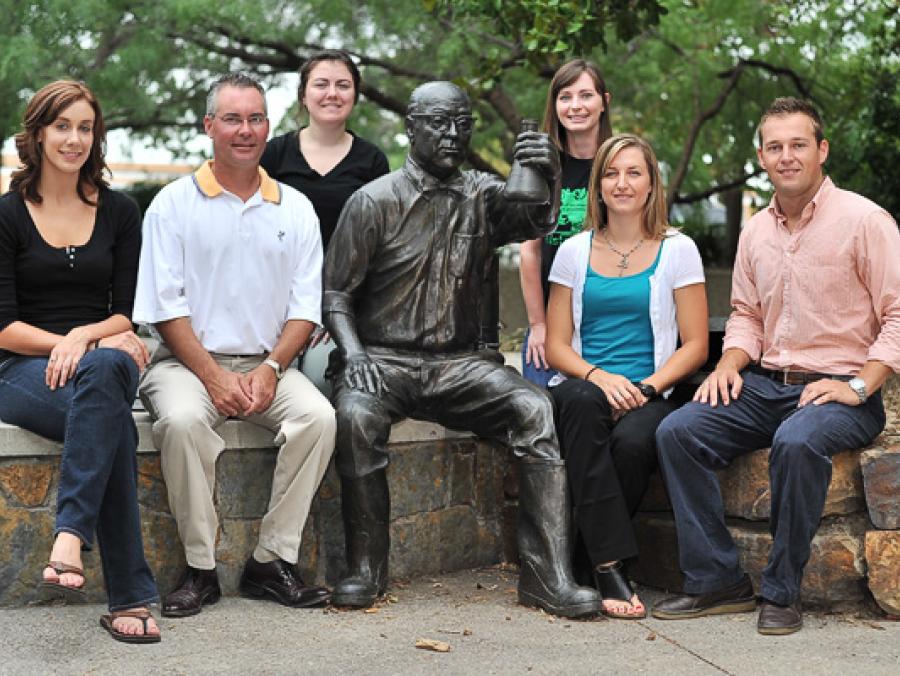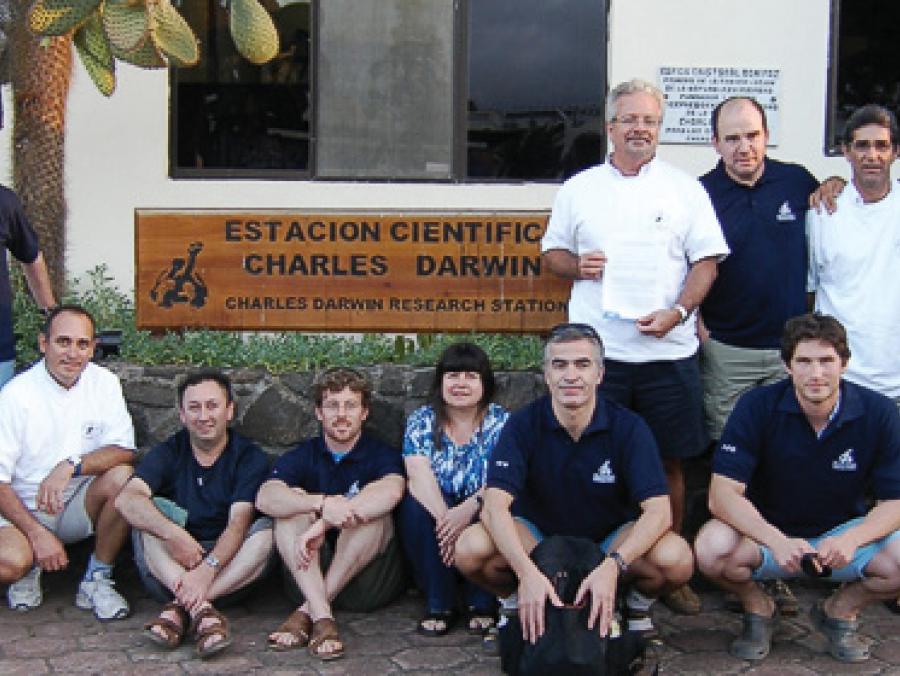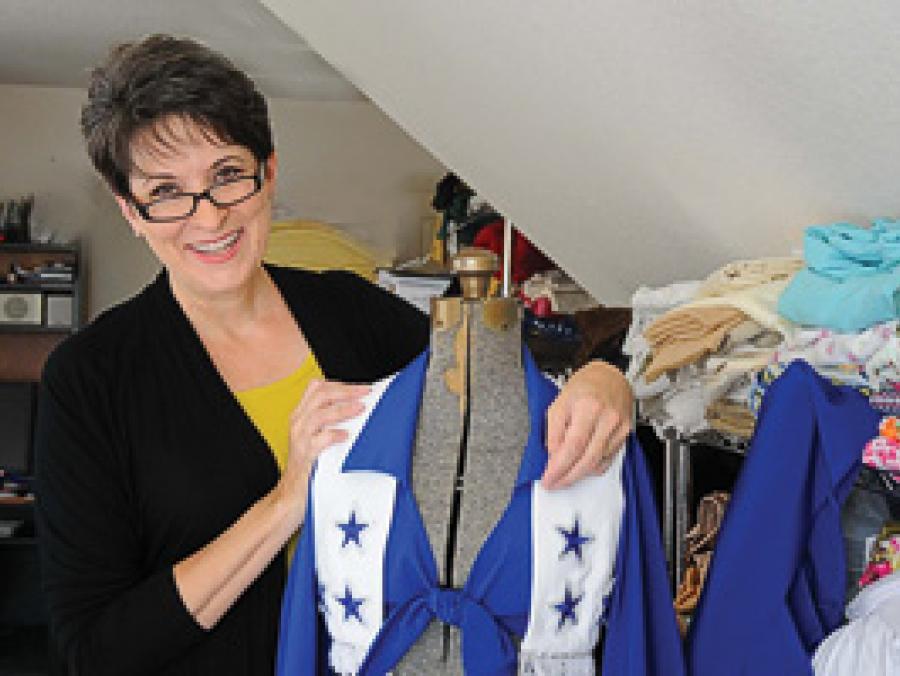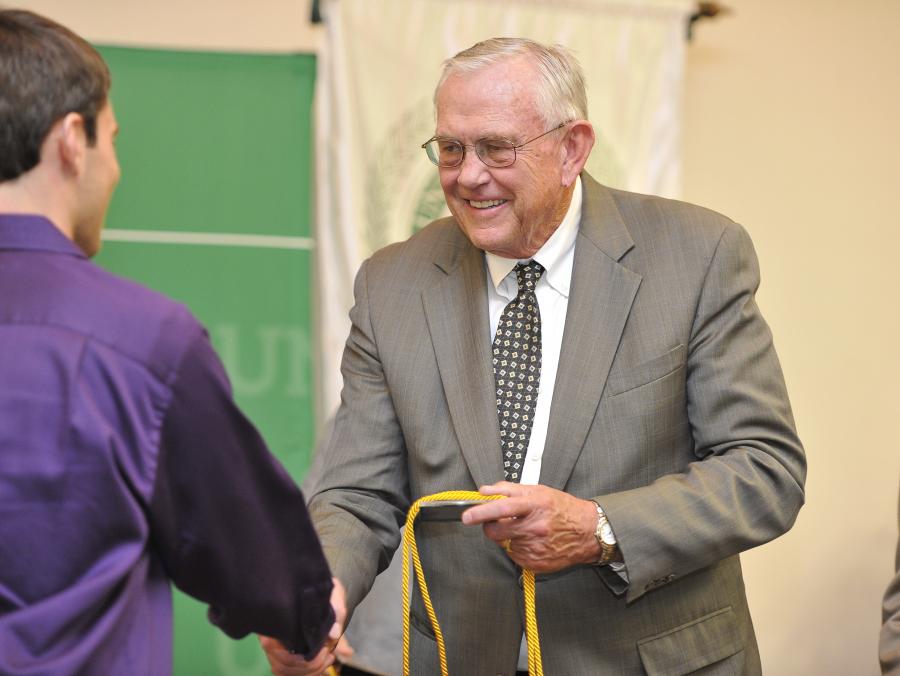
Chris Bream (’00) immersed himself in video games growing up.
“We had the original King’s Quest, a classic Sierra video game for IBM personal computers,” Bream says. “This was before the Internet was big.”
By high school, Bream had designed his first video game levels.
“I made some levels for DOOM (a popular computer video game in the early ’90s). I really enjoyed it and wanted to see if I could make a career of it,” he says.
Today, he works as technical director of Terminal Reality, a Lewisville game design and development company, where he oversees the technology used to make some of today’s most popular video games.
He credits his success to UNT and the university’s decision to establish the Laboratory for Recreational Computing.
“It was sort of revolutionary at the time,” Bream says. “UNT’s computer gaming lab was one of the very first in the nation at a university. I felt very fortunate to be part of it, because today there are a lot of copycats.”
$18 billion industry
Bream is among a growing number of UNT alumni — more than 50 and counting —who are making a living in today’s $18 billion computer game industry. From writing books to starting their own businesses and holding senior-level positions at top game companies, LARC alumni represent a cross-section of those working in today’s gaming markets, including the PC, mobile, online and casino game markets.
Former students work at some of today’s top computer game companies, including Art Griffith (’02), the lead game developer for Sony Online Entertainment in Tucson, Ariz. (pictured above), and Cesar Stastny (’04), director of technology at California-based Treyarch.
Bream says LARC was instrumental in preparing him for the industry. His collection of work includes the video games Ghostbusters, Spy Hunter and Demonik, the game seen in the 2006 movie Grandma’s Boy. His most recent projects are Star Wars for Xbox 360 Kinect and Def Jam Rapstar, a karaoke game that detects if a player is singing the correct lyrics.
“The LARC program forces you to use all the knowledge you’ve learned from other classes ‘to make something cool,’ as (LARC director) Ian Parberry would say. You also have to be very observant and logical,” Bream says.
But at the end of day, it’s about entertainment, he says.
“It’s exciting to be involved in making people’s lives more fun.”
National attention
UNT alumni working in today’s gaming industry have helped garner national attention for the LARC program. UNT recently was named by GamePro and The Princeton Review as among the Top 50 best institutions in the U.S. and Canada for studying game design.
Around since 1993, LARC was established in what is now the Department of Computer Science and Engineering by Parberry, who is a professor of computer science and interim chair of the department, as well as LARC director.
LARC alumni stress the importance of being able to solve problems and think logically to work in today’s evolving game industry that markets to cell and website gamers, social networking sites and game system players.
Students interested in the LARC program need to be prepared to “bone up on their math,” Parberry says.
“They are going to do a lot of math. Many students are surprised by that,” he says. “And they are going to do a lot of coding, usually several thousand lines of C++ code. And while they will do a lot of work on teams, they also need to be able to be independent workers and thinkers.”
Fletcher Dunn, now a technical director at the Disney company Wideload Games, says developing games for entertainment is no easy task.
“Designing games is a technical challenge,” says Dunn, who co-wrote the book 3D Math Primer for Graphics and Game Development with Parberry.
“There’s a whole pipeline to making art and animation.”
Doing this for a living
In the sixth grade, Treyarch’s Stastny stared into a vast field of life-threatening asteroids in a single line of red numeric ones and zeros.
“I began to mess around with my dad’s programmable HP-65 calculator and I wrote my first computer game, Asteroid Dodge,” Stastny says.
His fascination with computer games grew, and Stastny says he found himself thinking, “You can make games on these things! SpaceWar? Are you kidding me? Where do I sign up?”
Stastny has come a long way since taking on those life-threatening asteroids. He says LARC was pivotal in providing the high-tech skills and knowledge he needed to land his first job as a game programmer and go on to become director of technology at Treyarch, a video game studio best known for its Call of Duty titles.
“Parberry will dive in as deep as the most ambitious student wants to go. If you think you would like to be a game programmer, his courses will help you figure out if this is for you,” he says.
“This was the ‘eureka’ discovery for me during that first LARC course. I found out that, hey, I can really do this. I could do this for a living.”
Stastny is responsible for the design, production and even some public relations for versions of Treyarch’s popular Call of Duty games. He has been working on Call of Duty: Black Ops, due out in November.
“There are a zillion problems to solve, and each one is a little adventure,” he says.
More than child’s play
Griffith’s parents used to tell him growing up that he was wasting his time by playing too many video games. They might think differently today, given his position at Sony Online Entertainment.
“It turned out it was research,” Griffith says, looking back at his childhood love for the games.
For him, UNT’s Parberry was the first to acknowledge that game programming was worthy of academia.
“My time in LARC was invaluable,” he says. “Aside from the discrete knowledge of how to make a game, the culture of LARC taught me to communicate with my peers on both an intellectual and collaborative level.”
After graduating, Griffith joined the one-man game development startup Octopi. On the floor of a garage, he helped design the video game Poxnora, an online collectable/tradable strategy game that also can be played as an app on Facebook.
In January 2009, Sony bought Octopi. Today, he says Poxnora has more than 2 million registered users and 10 million games played.
He points out that “making and playing a video game are two completely different animals.”
“UNT’s computer science program gives you the foundation to learn the things you need to learn to make games, and it teaches the rigorous academics needed to write games,” Griffith says.
“It’s very intellectually challenging. Game development is one of the most difficult things you can do in computer science. There are very few fields where you get to deal with artificial intelligence, graphics and server technology at the same time. I find it both fun and fulfilling.”


























